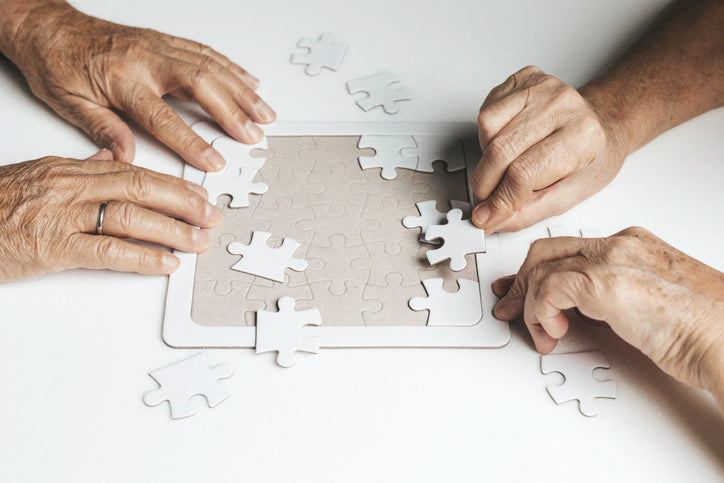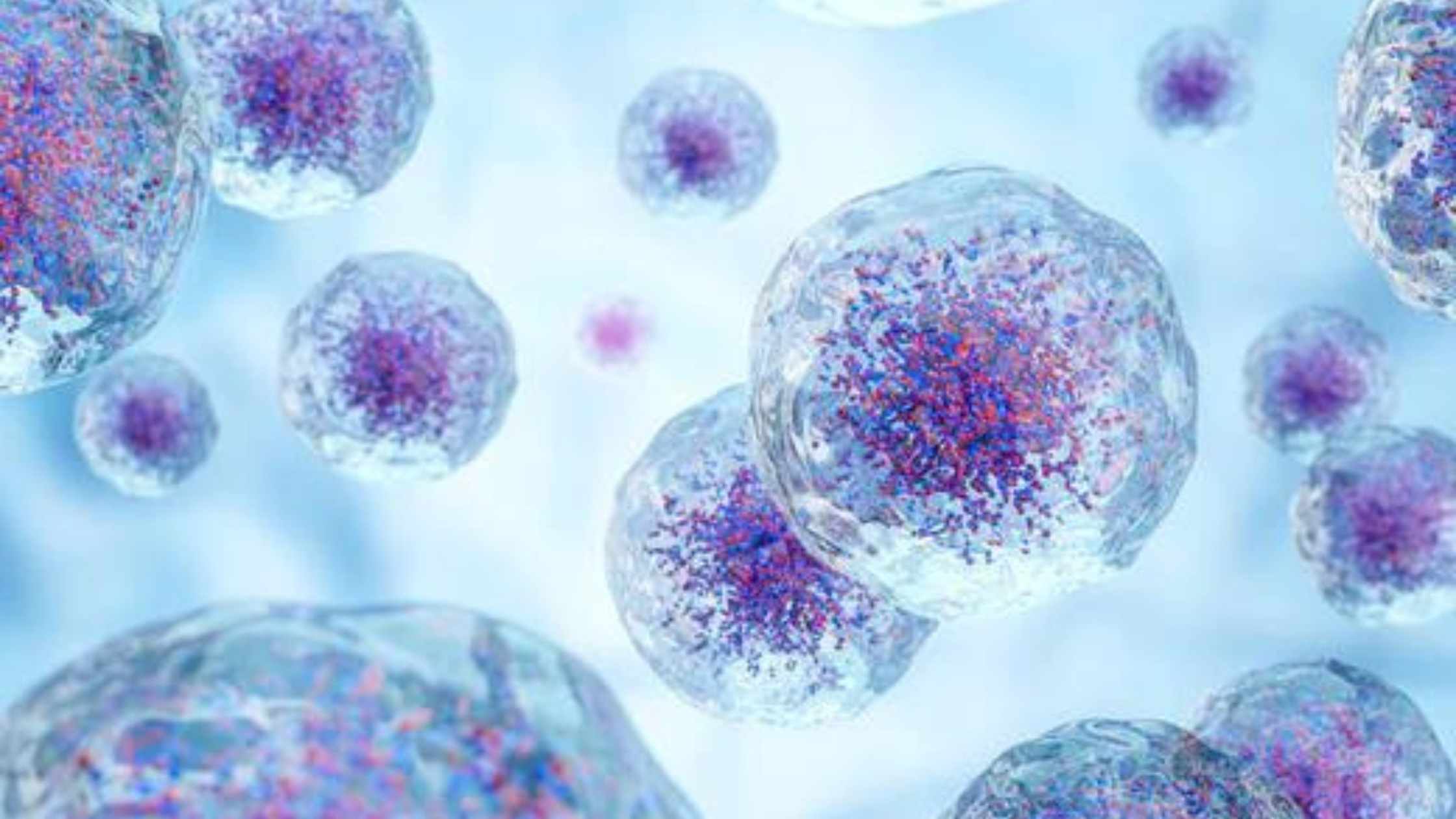Aging isn't just the passage of time; it's a complex interplay between biological mechanisms and environmental factors.
Understanding the reasons behind aging requires navigating through intricate pathways that define our journey through life. It's a fascinating journey worth exploring—let's delve into why we age.
Exploring the Hallmarks of Aging
The hallmarks of aging are a set of interconnected biological processes that contribute to aging at the cellular and molecular levels. These hallmarks, originally proposed by researchers, help explain the complexities of aging. Here they are:
Epigenetic Dysregulation
Over time, epigenetic processes undergo subtle but significant alterations, leading to epigenetic dysregulation. One such alteration involves changes in DNA methylation patterns.
DNA methylation refers to the addition of methyl groups to specific regions of DNA, acting as a molecular tag that influences whether a gene is active or inactive (R, R).
These methylation patterns can change as we age, potentially silencing genes essential for cellular health or activating genes associated with aging-related processes (R).
Epigenetic dysregulation stands as a pivotal mechanism underpinning the aging process. It drives a cascade of changes within cells, contributing significantly to the gradual decline in cellular function and the body's overall resilience with advancing age (R).
Histone Modifications
Histones are proteins around which DNA is wrapped and can undergo modifications that influence the accessibility of genetic material.
Modifications like acetylation, methylation, or phosphorylation can alter how tightly DNA is wound around histones, determining whether genes in that region are accessible for gene expression or are tightly packed and silent.
The consequences of these alterations in DNA methylation patterns and histone modifications are profound. Changes in gene expression patterns influence cellular functions critical for maintaining youthfulness and health (R).
Essential genes responsible for repair mechanisms, stress response, immune function, and various metabolic processes might become less active, while genes associated with aging or cellular decline may become more prevalent (R).
Protein Accumulation
The accumulation of misfolded or damaged proteins within cells is a hallmark of aging. Cells have robust mechanisms to maintain protein integrity, but these systems falter over time.
Dysfunctional proteins start to accumulate, overwhelming the cellular machinery designed for their removal (R).
The build-up of these aberrant proteins impairs cellular functions, leading to cellular stress and contributing significantly to age-related diseases like Alzheimer's and Parkinson's (R).
Mitochondrial Dysfunction
Mitochondria, the energy factories within cells, experience a decline in function with age. This decline results in reduced energy production and an increased generation of free radicals – harmful byproducts that damage cellular components (R).
The cumulative cellular damage from these free radicals accelerates aging and contributes to age-related diseases (R).
Telomere Shortening and Damage
Telomeres, protective caps at the ends of chromosomes, shorten with each cell division. Eventually, when telomeres become critically short or damaged, cells reach a point where they can no longer divide and may either become senescent or undergo cell death (R).
This process plays a pivotal role in aging and contributes to age-related diseases by limiting the cell's ability to renew and regenerate (R).
Senescent Cells
Senescent cells, although they cease to divide, remain metabolically active. These cells accumulate with age and start secreting inflammatory molecules, creating an environment of chronic inflammation within tissues (R).
This chronic inflammation contributes to tissue damage, exacerbating aging and fostering an environment conducive to age-related diseases (R).
Genomic (DNA) Instability
DNA damage accumulates over time due to various factors, including environmental stressors and errors during DNA replication (R).
This accumulation of DNA damage leads to mutations impairing cellular function, contributing significantly to aging and increasing susceptibility to various age-related diseases (R).
Decline in Stem Cells
Stem cells, vital for tissue regeneration and repair, decline in number and functionality with age. This decline reduces the body's capacity for tissue renewal, impairing the body's ability to repair and regenerate tissues, contributing to the overall aging phenotype (R).
Altered Cell Communication and Nutrient Sensing
Changes in cell-to-cell communication and disruptions in nutrient-sensing pathways impact various biological processes. These alterations disrupt the body's ability to maintain homeostasis, leading to imbalances contributing to aging (R).
Advanced Glycation and Other Crosslinks
Accumulation of advanced glycation end products and other crosslinks stiffens tissues and impairs the function of proteins. This process contributes to age-related declines in tissues and organs, affecting their flexibility and functionality (R).
Beyond the essentials
Lifestyle, environmental exposures, chronic stress, changes in the immune system, hormonal alterations, and the decline of other physiological processes all contribute to the aging process, weaving a comprehensive understanding of our journey through time (R).
But there’s more to ageing than meets the eye. Let’s explore some fascinating changes that have many wondering, why?
Why do humans shrink as they age?
Spinal Disc Compression
The spine, a marvel of engineering supporting our body's structure, changes as we age. The discs between vertebrae, acting as cushions, lose some of their fluid content.
This reduction in fluid makes the discs less effective at absorbing shock, causing them to compress slightly. Over time, this compression can contribute to a subtle decrease in overall height (R).
Reduced Bone Density
Another factor contributing to the reduction in height is a decline in bone density. With age, bones may lose minerals and mass, making them more prone to thinning and weakening.
This phenomenon, known as osteoporosis, particularly affects the vertebrae in the spine, leading to a gradual collapse and compression of these bones, resulting in a slight decrease in stature (R).
Postural Changes
Age-related changes in posture also play a role in height diminution. As muscles weaken and supportive structures like tendons and ligaments lose some elasticity, individuals may adopt a slightly stooped or hunched posture.
This altered posture can further contribute to a decrease in overall height (R).
Weakening Supportive Structures
The gradual weakening of muscles, ligaments, and tendons that support the spinal column contributes significantly to the reduction in height.
These structures, which provide essential support and alignment, lose some strength and resilience over time, leading to a subtle collapse or curvature of the spine (R).
What slows aging the most?
Maintaining a healthy lifestyle isn't just a choice; it's a powerful tool in the battle against aging. Here's a closer look at the key components that form the foundation for slowing down the aging process:
Balanced Diet: The Fuel for a Vibrant Life
A well-rounded, nutritious diet provides essential vitamins, minerals, antioxidants, and other nutrients for cellular health and resilience.
Emphasising a diet rich in fruits, vegetables, whole grains, lean proteins, and healthy fats nourishes the body and supports its ability to repair and regenerate (R).
Regular Exercise: Vitality Through Movement
Physical activity isn't merely about staying fit; it's a potent anti-aging tool. Exercise helps maintain muscle mass, supports bone density, enhances cardiovascular health, and promotes overall well-being.
From brisk walks to strength training and yoga, incorporating diverse forms of exercise into daily routines yields immense benefits (R, R).
Stress Management: Calming the Storm
Chronic stress takes a toll on the body, accelerating aging processes. Adopting stress-management techniques like meditation, mindfulness, deep breathing exercises, or engaging in hobbies and activities that bring joy and relaxation can significantly mitigate the harmful effects of stress (R).
Adequate Sleep: Rejuvenating Body and Mind
Quality sleep is fundamental for cellular repair, cognitive function, and overall health. The body undergoes essential processes during sleep, including toxin removal and tissue repair. Prioritising adequate sleep fosters rejuvenation, promoting optimal functioning and resilience (R).
Supplements and Medications: Exploring New Avenues
Innovative research explores specific supplements and medications that target the intricate mechanisms of aging.
Substances like Nicotinamide Mononucleotide (NMN), Resveratrol, and other compounds have shown promise in enhancing cellular health, potentially slowing down aspects of aging.
Clinical trials and studies are continually evaluating their efficacy and safety in promoting healthier aging (R).
Conclusion
While these interventions offer exciting prospects, they often complement, rather than replace, a healthy lifestyle. The synergy between lifestyle choices and emerging interventions amplifies the potential for healthier aging.
In essence, aging is a tapestry woven with intricate threads. While some aspects are inevitable, understanding the aging process can help you make informed choices and enhance the quality of your journey. As Eartha Kitt once said, “Aging has a wonderful beauty, and we should have respect for that”.





